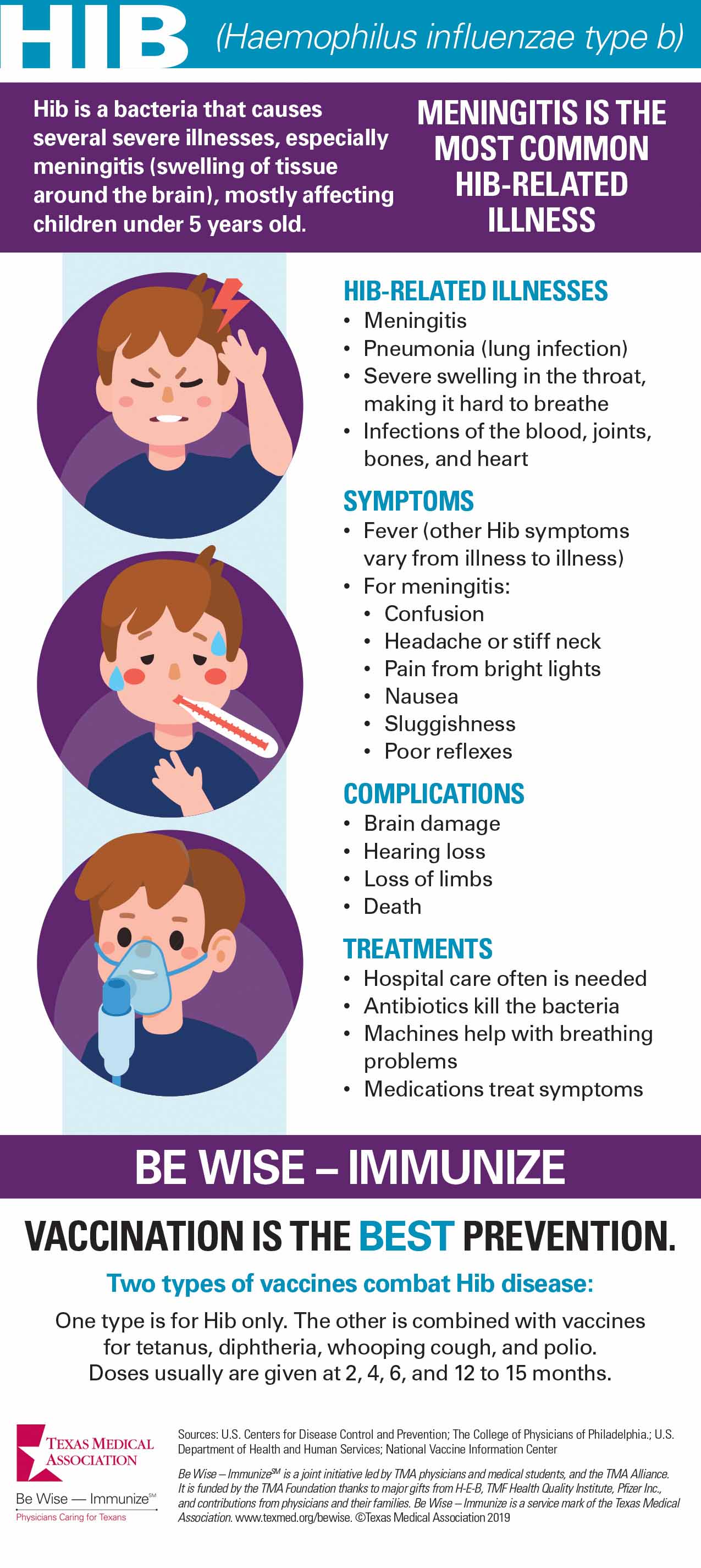Despite its name, Haemophilus influenzae type b – or Hib – doesn’t cause influenza. In the 1890s, doctors thought this bacteria might cause flu and – despite later research showing flu is caused by a virus – the name stuck.
But Hib does cause several severe illnesses, mostly among children under 5 years old. Meningitis is the most common.
Hib spreads from person to person through coughing, sneezing, or anything else that spreads mucus and saliva. If the germs stay in the nose and throat, there’s usually no problem. But serious illness can arise when the germs travel to the lungs or bloodstream, resulting in invasive Hib disease.
Before the first Hib vaccine arrived in 1985, Hib disease was the leading cause of bacterial meningitis among U.S. children under 5 years old. About 20,000 U.S children in that age range got Hib disease each year, and 3% to 6% died. Thanks to the vaccine, cases of invasive Hib disease dropped by more than 99%, according to the U.S. Centers for Disease Control and Prevention.
Four brands of vaccine are used today: ActHIB, Hiberix, PedvaxHIB, and Pentacel. Doses usually are given at 2, 4, 6, and 12 to 15 months. Hib vaccine also can be used in older children and adults with weak immune systems.

Tex Med. 2019;115(8):47
August 2019 Texas Medicine Contents
Texas Medicine Main Page
Last Updated On
August 18, 2025
Originally Published On
July 30, 2019